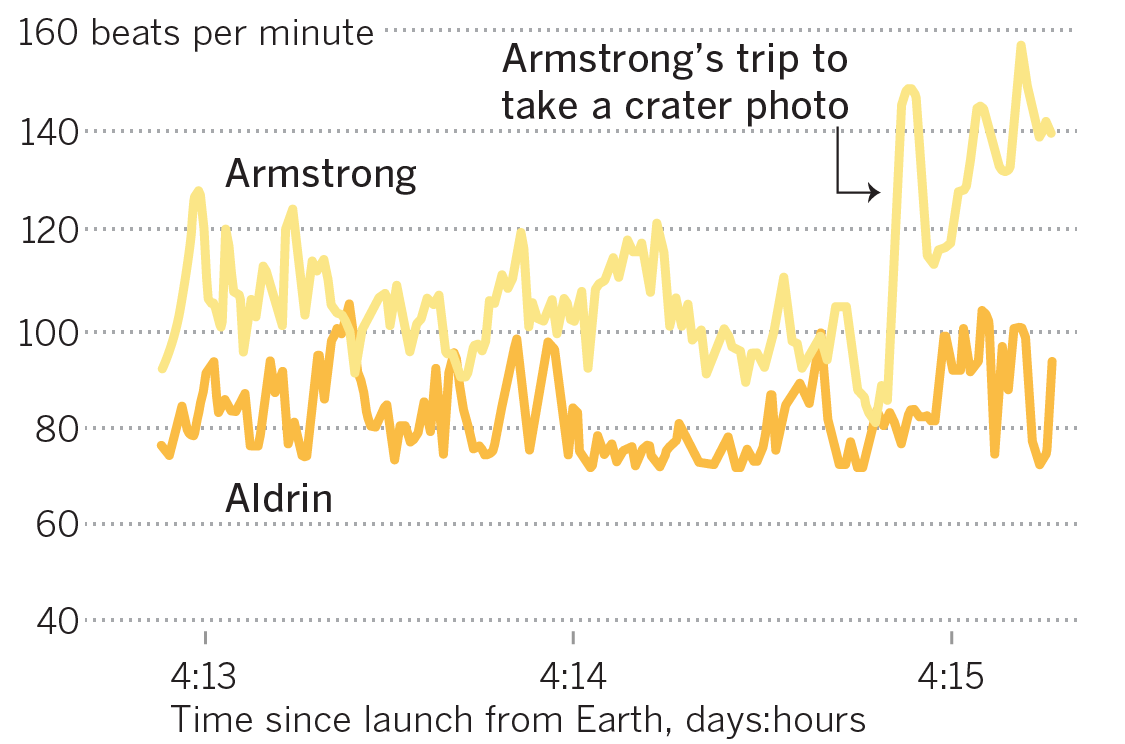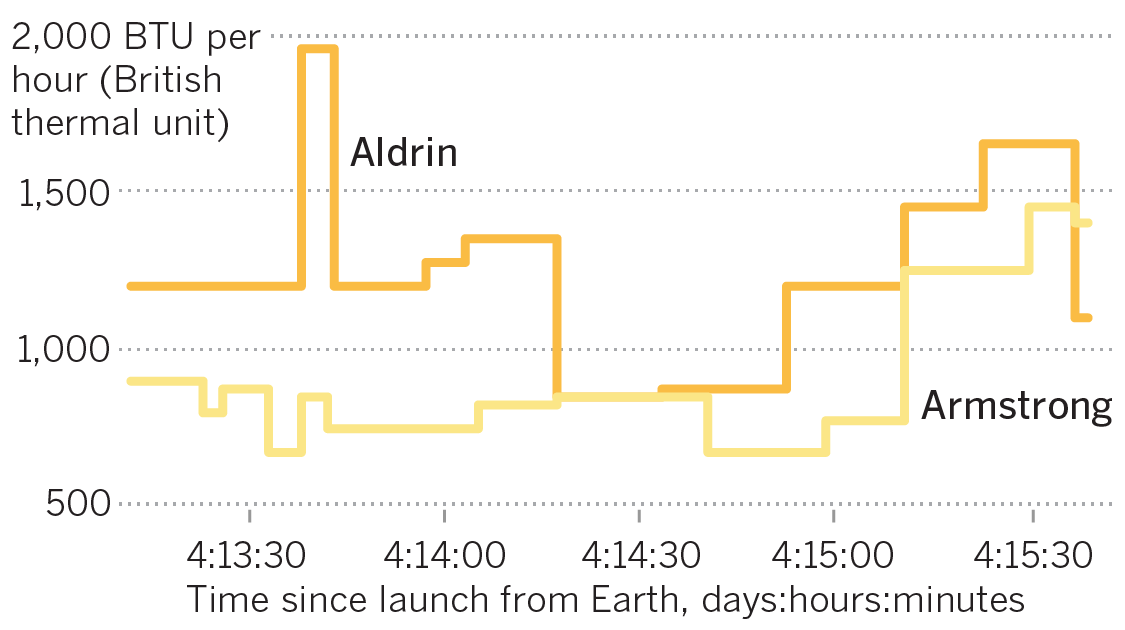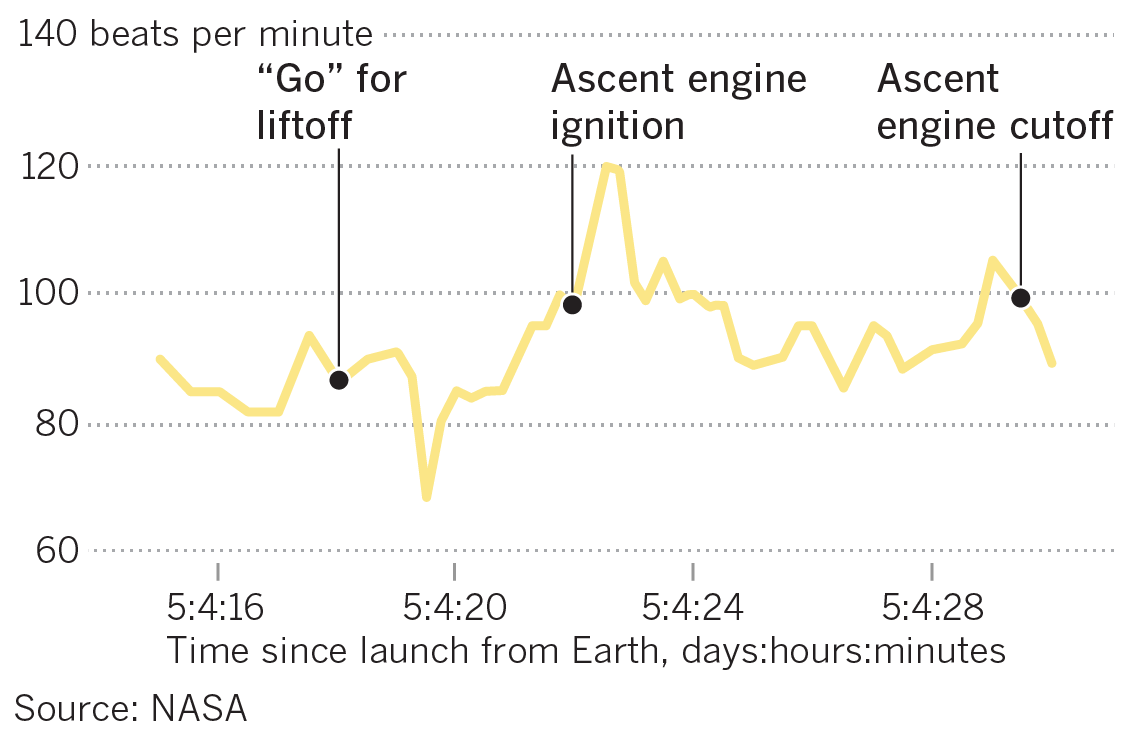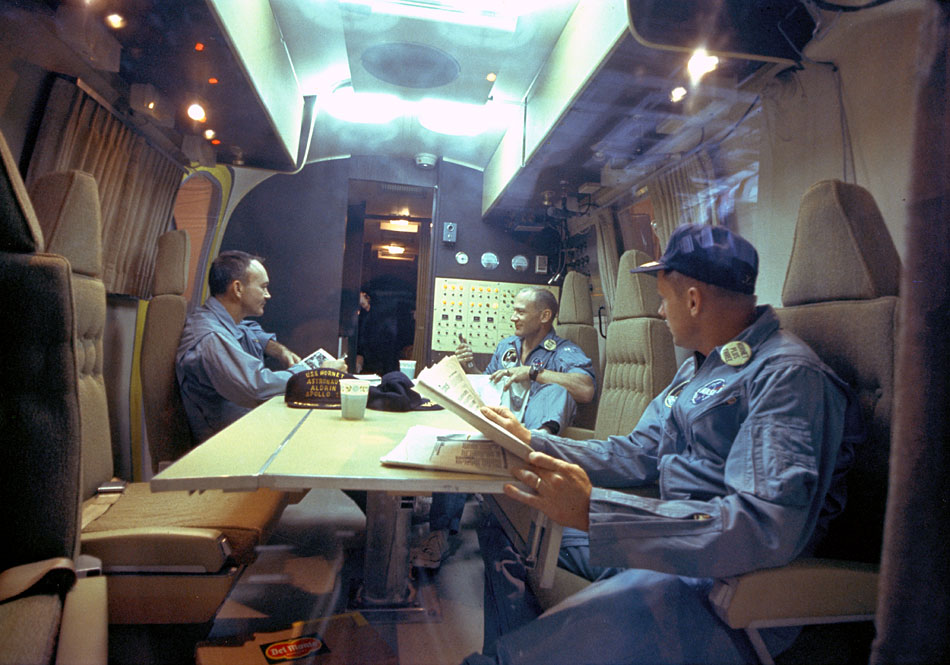Listen to Neil Armstrong’s heart rate during the Apollo 11 moon landing
150 beats per minute. That was Neil Armstrong’s heart rate when the Eagle lander he was piloting touched down on the moon.
At 150 bpm, the Apollo 11 commander’s heart was working at a brisk 80% of the maximum capacity for a typical 38-year-old man.
Armstrong had spent years training for this moment, but there was a last-minute surprise. The Eagle’s descent from lunar orbit to the moon’s surface on July 20, 1969, was supposed to be automated. A computer overload, however, meant Armstrong had to take over and land the Eagle manually. His heart rate during the historic landing ranged from 100 bpm to 150 bpm — higher than his average heart rate during launch, which he didn’t have to pilot.
NASA closely monitored the vital signs of Armstrong, lunar module pilot Edwin “Buzz” Aldrin and command module pilot Michael Collins throughout the mission, from the launch at Kennedy Space Center in Florida to the splashdown in the Pacific Ocean. Here’s a look at the vital signs of Apollo 11.
Listen to Armstrong’s average heart rate during launch
The trip from Earth to the moon took about four days. Going outside for a run during that interval wasn’t an option, so the crew had to exercise in place. Nearly 50 years before the first Apple Watch could track a wearer’s heart rate, Collins was able to learn his space-jogging heart rate by radioing back to Earth. It was 96 bpm, a little above half the maximum rate for a man his age and just within the target for exercise.
Listen to Collins’ heart rate during exercise
There was one thing Armstrong and Aldrin didn’t have to worry about during their descent to the lunar surface – bathroom breaks. Both men took Lomotil to retard bowel movements before landing. That wasn’t the only drug consumed during the mission. Aldrin took two aspirin nightly, which he said were to help him sleep, and all three crew members took motion sickness medications before and after their final splashdown.
After the Eagle landed, Armstrong and Aldrin were supposed to have taken a four-hour nap. The men, however, felt ready to get to work in the low-gravity atmosphere of the moon, so NASA gave them the go-ahead to proceed with their historic excursion.
While exploring the moon, Armstrong’s heart rate spiked as he hurried 60 yards to take a panorama photo of a crater. The rate remained high as he scrambled to collect as many samples as possible in just 10 minutes.
Heart rates during surface exploration

Armstrong had the higher heart rate, but Aldrin was pumping out more body heat. In fact, Armstrong used the minimum cooling mode for his suit during surface operations, whereas Aldrin had his cranked to the max for 42 minutes before turning it down to medium for the remainder of his moonwalk.
Metabolic rates during moonwalks

Once back in the Eagle, Armstrong and Aldrin were stymied by moon dust. They tried to remove as much of it as they could before entering the lunar module’s cabin, but a large amount made it inside and – as they began to remove their suits – onto their skin. The dust had a pungent odor and the consistency of graphite. They had hot towels to wipe it off, but they couldn’t get it out from under their fingernails.
The excursion was surely tiring, but the lack of beds (hammocks were added to later Apollo missions), bright light from outside, cold temperature and noisy machines inside the lunar module made it difficult for the astronauts to sleep before their rendezvous with Collins in the orbiting command module. Without even seats in the Eagle, Aldrin stretched out in his spacesuit on the floor while Armstrong tried to make himself comfortable on the module’s engine cover. Like the liftoff from Earth, the ascent from the moon barely raised Armstrong’s heart rate, which briefly rose to 120 bpm after liftoff before dropping down to the restful 80s.
Armstrong’s heart rate during lunar liftoff

The return trip was uneventful. The astronauts took their second pass through the Van Allen radiation belt, a phase of the trip that moon-landing skeptics say was impossible to survive. Radiation monitors on the crew showed an exposure of 0.25 to 0.28 rad for the entire mission. That’s just a little more than a person gets with a modern-day CT scan of the head and well below dangerous levels.
Sleeping without a bed in the command module didn’t seem to bother the crew. Maybe the fact that they were weightless helped them drift off; the moon placed a little more pressure on Aldrin and Armstrong at 17% of Earth’s gravity. In any case, the crew slept well, though the sleep times they reported were consistently less than what their biometric data showed. While sleeping, the astronauts’ heart rates averaged in the 40s, comparable to a sleeping heart rate on Earth.
Listen to Armstrong’s heart rate while asleep
While the moon rocks and lunar dust were the great scientific prizes of the trip, doctors were concerned about the dust in the astronauts’ pores and under their nails. No one knew whether the material contained extraterrestrial microbes that could cause new kinds of infections. NASA, the National Academy of Sciences and the Department of the Interior agreed that, once they were back on Earth, the crew members should be quarantined for 21 days before interacting with Earthlings again.
Scientists later realized the lunar surface was sterile. The astronauts remained healthy and were reunited with their families after the three weeks were up. Just to be sure the moon dust was safe, researchers injected 24 mice with lunar material. All of them survived.

Sources: NASA
Credits: Graphics by Shaffer Grubb. Page production by Priya Krishnakumar